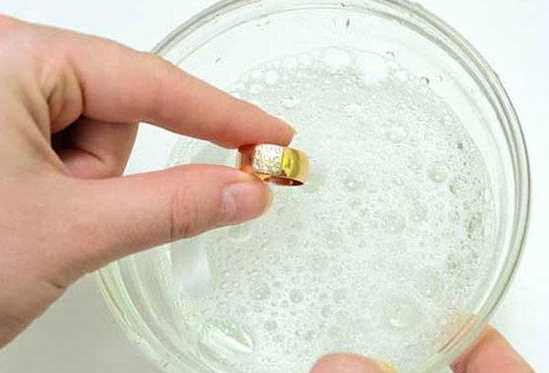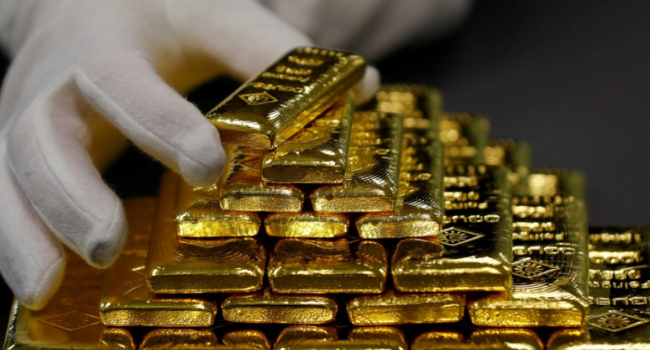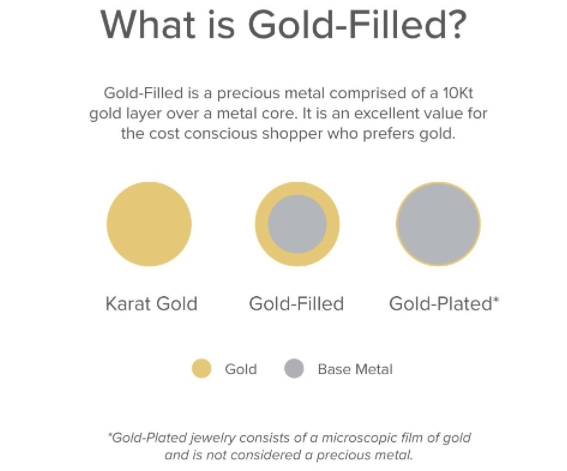Gold is a valuable evergreen metal, and some people will do just anything to get hold of it. This sometimes includes getting something that looks like gold. Today, most people want to use gold materials but can’t afford them and then choose the fake one. The fake gold thus fades over time but does fake gold rust too?
Yes, fake gold can rust. Fake (or imitation) gold does contain real metals. The only difference between real gold and “fake” gold is the proportion of the different types of metal in any given item, as well as its quality.
It is common for fake and inexpensive gold jewelry to rust or get discolored quickly when exposed to air, water, or perfume. It happens because lower-quality gold jewelry is electroplated with a thin layer of gold on the surface to look like real gold.
If you want to find out more about fake gold, with ways you can protect and prevent it from rust for a more extended period, then continue reading.
Contents
Is It Possible for Fake Gold to Rust?
Fake gold has a high possibility of rusting. This is because the alloy composition does not make the acclaimed gold as durable as it should.

Gold items that would not be able to rust must have a gold alloy composition that enables them to be very durable. Other than this, some of these fake gold items are simply a composition of other metals with a mild coating of gold to make it appear like gold.
The coating soon comes off and the metals that are vulnerable to rust begin to give in. These are the reasons why fake gold can rust.
How Do You Get Rust off Your Fake Gold?
If your gold is fake and you are dealing with rust problems, there are some simple steps you can take to deal with the situation. You should also know that it is cost-effective as it only involves the use of paper towels, toothpaste, and water. Below is how you can make use of these items to protect your fake gold from rust:
1. Apply Toothpaste Solution to the Gold Item
You could use either your hand or toothbrush to get a sizable amount of toothpaste from the tube. It should be enough to cover all the items or parts that are affected by rusting.

You should scrub the gold item afterward using a toothbrush. You can also use your fingers in the absence of a toothbrush or if you prefer it this way. Using either the toothbrush or your fingers, make sure the gold item is scrubbed thoroughly. You can even decide to reapply the toothpaste and repeat the process if you see fit.
After this, exercise some patience for about 2 to 3 minutes. The applied solution and the effort taken to scrub should do the needful by this time. However, there is still something important to be done.
2. Rinse the Gold Item
Whether it is jewelry or any other gold item, it should be rinsed in water. However, you need to be particular about the kind of water used to rinse the gold item.
For one, you should avoid using water that is rich in sodium chloride (salt). The reason is that sodium chloride is one of those chemical properties that trigger rust in such metal alloys. You should also make sure the water is not treated with chlorine. Other than this, you should use warm water.

3. Make Use of Paper Towel
Getting the sticky toothpaste solution off the gold item is one of the major reasons for rinsing in warm water. To further aid this and keep your item in the right state, you should clean and dry with a paper towel. You should also make sure this is done gently as there is no need to scrub with a paper towel.
What Makes Gold Fake?
It is practically impossible to have a gold item as absolutely gold. However little, there is a need for another metal or metals to make the item. As a result, the definition of fake gold is certainly not the addition of other metals to the gold item. To know fake gold, here are some things to consider:

If Gold Is Only Used as a Coating:
It is fake gold if the use of gold is only for coating. Real gold has to make use of a sizable amount of gold as part of the item’s physical composition and not just the coating.
If There Are Discrepancies in the Amount of Gold Used:
You must have the word “karat” used to describe gold as one point or the other. This is simply about how the quality of the gold item is determined. A higher karat means that the item makes use of more gold. You should also know that the highest is 24 karat and although it is not 100% pure gold, it is very close to it.

Fake gold in this context would suggest that the seller lies about the purity of the gold item. If you paid for the value of 21 karats and got 13 karats, you have ended up with fake gold.
How to Identify Fake Gold before Buying?
Some people are outrightly against getting fake gold. However, they need to know how to identify such items and some of the ways include:
Check for the Jewelry Stamp:
- Nitric Acid Test: A drop of this liquid into a spot that you have scratched can tell if it is fake or real. A fake one will see the spot turn greenish
- Float Test: This is especially useful for gold jewelry. A real gold dropped in water will sink but a fake one will float.
- Magnet Test: Using a magnet can help you figure out if your gold is fake or real. The magnet will get attracted to the fake one as real gold does not have magnetic properties.
Conclusion
You now know without a reasonable doubt that fake gold can rust. This is why you need to get real gold when the need arises. And just in case you have fake gold or have to make do with it, you also have details on how to keep them free of rust.

